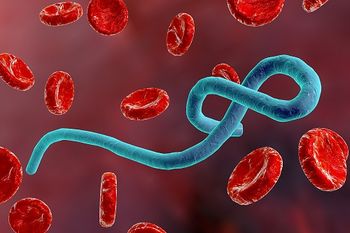
In case you missed them, our top 5 articles for the week of March 19, 2017 are highlighted here.

In case you missed them, our top 5 articles for the week of March 19, 2017 are highlighted here.

Researchers find that rapid diagnostic testing may be the key to improving testing and treatment for chlamydia and gonorrhea.

The results of a new study have revealed that older women and African Americans are less likely to get vaccinated against influenza.

A multi-institution research team has found that daptomycin is effective and well-tolerated in children.

As we reflect on the progress made in the fight against tuberculosis (TB), the Centers for Disease Control and Prevention stress that without actions to accelerate progress, the goal of eliminating TB in the United States by the end of the century will not be met.

Our outlook on infectious diseases as threat to safety is outdated, but how do we change it?

A mumps outbreak that began in the country last fall is continuing across the United States. New research suggests that even small populations of unvaccinated individuals may be fueling the outbreak.

Fewer expectant mothers infected with HIV transmit the virus to their babies, but gaps in treatment persist. More infants could be protected with proper screening and treatment.

Researchers from the University of Oxford and Janssen Pharmaceuticals believe they have demonstrated an Ebola vaccine approach that fosters immunity for up to 1 year.

Harvard T. H. Chan School of Public Health researchers report that a new rotavirus vaccine was found to be 66.7% effective.

Duke Health researchers have found that a UVC machine use can reduce transmission of harmful superbugs in hospital settings.

Flu activity continues to drop across the country, but new outbreaks continue as health officials predict a flu season that could last until May in some areas.

Research has found that women who were forced to have sex and were diagnosed with an sexually transmitted disease (STD) were less likely to receive treatment compared with women who did not experience forced sex.

This week’s Public Health News Watch focuses on recent claims in the media that the budget cuts proposed by the Trump administration will have a negative impact on healthcare outcomes and patient safety.

Johns Hopkins University School of Medicine researchers provide insight on how HCV evades the human immune response and why developing an HCV vaccine has been difficult.

Guidelines for the human papillomavirus (HPV) vaccine include recommendations on which populations of individuals should receive either the 2-dose or 3-dose regimen.

A new study shows a significant reduction in rates of pneumococcal bacteremia in young children since the introduction of the pneumococcal conjugate vaccine.

Contagion® takes a closer look at how Staphylococcus aureus infections continue to plague professional sports players.

As emerging infectious diseases and resistant bugs become a growing issue, the need for stronger disinfectants becomes even more vital.

Today is National Native HIV/AIDS Awareness Day (NNHAAD), a day dedicated to promoting awareness of the impact that HIV/AIDS has on Native communities, particularly American Indians, Alaska Natives, and Native Hawaiians.

Researchers recently examined whether or not some virus families are better able to jump across species boundaries and emerge in new hosts than others.

A new study finds that patients with heart failure, obesity, are at increased risk of failing oral antibiotic therapy for skin and soft tissue infections.

In case you missed them, our top 5 articles for the week of March 12, 2017 are highlighted here.

According to the team’s research, published in the Proceedings of the National Academy of Sciences, H. pylori uses a unique biosynthetic pathway to synthesize vitamin K2, which is essential to many vital chemical reactions that keep the organism alive.

The first international Open Science Prize has been awarded to Fred Hutchinson Cancer Research Center and University of Basel researchers for a software tool that is capable of tracking viral disease outbreaks.

CDC researchers found that not only is the proportion of US food that is imported is increasing, but the number of food-borne disease outbreaks associated with imported foods is also increasing.

A study suggests that heavy drinkers receiving treatment injections for their condition may be more susceptible to acquiring an antibiotic-resistant infection with Anaerobiospirillum succiniciproducens, which can be fatal.

CDC researchers examine STD services and confidentiality issues among individuals between 15 and 25 years of age and find that not spending time alone with a healthcare provider, without a parent in the room, may limit use of STD services for some youths.

Adherence with HIV therapy regimens remains difficult for some patients. Nurse-delivered interventions can increase adherence, reduce disease costs, and extend the lifespan in an HIV-infected population.

According to the Centers for Disease Control and Prevention, residents in Miami-Dade, Broward, and Palm Beach counties have been at an increased risk of contracting Zika virus, since June 15, 2016.